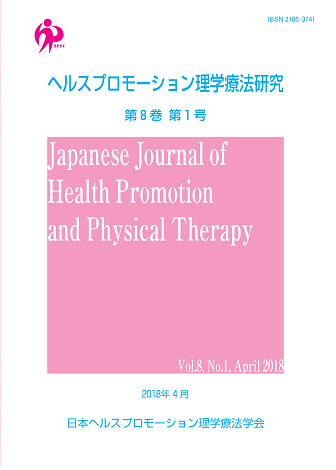Volume 8, Issue 2
Displaying 1-7 of 7 articles from this issue
- |<
- <
- 1
- >
- >|
ORIGINAL ARTICLES
-
2018Volume 8Issue 2 Pages 47-50
Published: July 31, 2018
Released on J-STAGE: October 05, 2018
Download PDF (341K) -
2018Volume 8Issue 2 Pages 51-56
Published: July 31, 2018
Released on J-STAGE: October 05, 2018
Download PDF (569K) -
2018Volume 8Issue 2 Pages 57-63
Published: July 31, 2018
Released on J-STAGE: October 05, 2018
Download PDF (396K) -
2018Volume 8Issue 2 Pages 65-70
Published: July 31, 2018
Released on J-STAGE: October 05, 2018
Download PDF (378K)
SHORT REPORT
-
 2018Volume 8Issue 2 Pages 71-75
2018Volume 8Issue 2 Pages 71-75
Published: July 31, 2018
Released on J-STAGE: October 05, 2018
Download PDF (417K) -
2018Volume 8Issue 2 Pages 77-83
Published: July 31, 2018
Released on J-STAGE: October 05, 2018
Download PDF (413K) -
2018Volume 8Issue 2 Pages 85-89
Published: July 31, 2018
Released on J-STAGE: October 05, 2018
Download PDF (355K)
- |<
- <
- 1
- >
- >|
